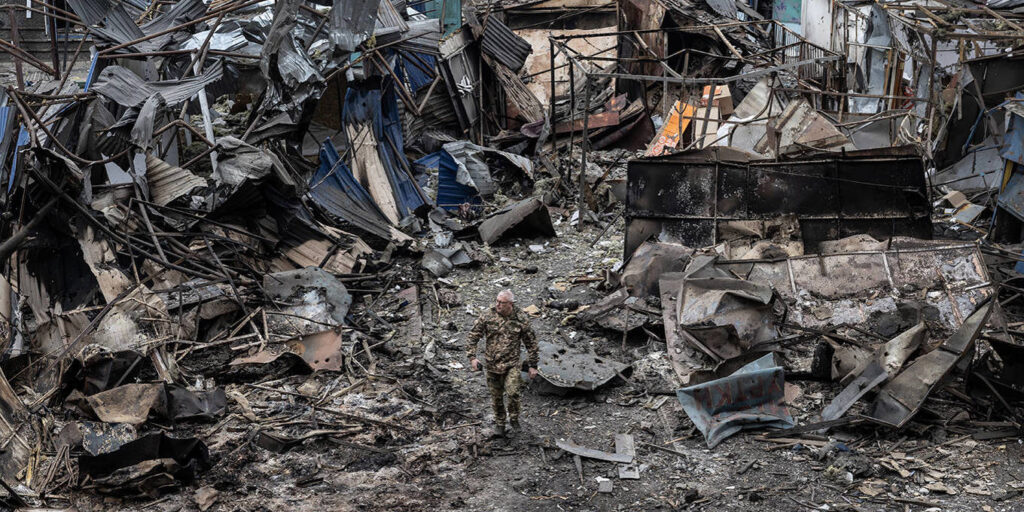STOCKHOLM – It has now been nearly 100 days since Donald Trump returned to the U.S. presidency, vowing to end the war in Ukraine “on day one.” Yet Russian missiles continue to strike Ukrainian cities, and peace is no closer than it was when Trump made that promise. The question that must now be asked—bluntly—is this: when will the administration admit that it is being played?
From the outset, Trump’s approach was simplistic. His opening demand was direct: stop fighting and start talking. Following his first conversation with Russian President Vladimir Putin, Trump declared that a ceasefire was imminent, a claim eagerly welcomed by Ukrainian President Volodymyr Zelensky. But behind the scenes, Putin had already begun manipulating Trump’s novice negotiator, real estate developer Steve Witkoff, dragging him into an endless maze of impossible conditions and convoluted demands.
Putin’s strategy is transparent. His calls for peace are performative. His negotiations are a ruse. And yet, the Trump administration—either out of naivety or willful blindness—continues to take the bait.
A War of Attrition, A Failure in Negotiation
Since launching his full-scale invasion in February 2022, Putin has relied on brute force, not diplomacy, to achieve his objectives. He began with 200,000 troops; today, that number has grown to around 600,000, fueled by selective mobilizations and high-risk incentives. The human cost has been staggering—700,000 to 800,000 Russian casualties, with more than 200,000 confirmed dead. And for what? Russia controls just 18.3% of Ukrainian territory—less than it did three years ago.
Despite these losses, Putin remains undeterred. His battlefield momentum has stalled, and he increasingly sees political manipulation—not military success—as his path to victory. In this effort, Donald Trump has proven an ideal mark.
Putin has used every trick in the autocrat’s playbook: flattery, false promises, and, reportedly, even business incentives. He praised Trump as the rightful winner of the 2020 election, sent well wishes following the 2024 assassination attempt, and allegedly commissioned a Kremlin artist to paint a portrait of Trump.
More troubling, Russian negotiators reportedly offered Trump and Witkoff multi-billion-dollar investment opportunities—an unsubtle hint at what could follow if U.S. support for Ukraine were abandoned. Witkoff himself has admitted that a significant portion of his last meeting with Putin centered on such “business prospects.”
Concessions with No Peace
Trump, eager for a quick diplomatic win, appears to have already conceded to key Russian demands. According to leaked accounts, the U.S. is prepared to recognize four occupied Ukrainian regions—Luhansk, Donetsk, Zaporizhzhia, and Kherson—as part of Russia. This is despite the fact that two of these regions’ capitals, Zaporizhzhia and Kherson city, remain under Ukrainian control. Any attempt to legitimize their annexation would be politically impossible for Kyiv—and morally indefensible.
Even more dangerously, Trump seems willing to accept Putin’s second major condition: the exclusion of Western military presence from all of Ukraine. He has dropped any mention of NATO membership and appears ready to suspend U.S. military assistance altogether.
Europe’s Last Word
Fortunately, the United States does not act alone. While Trump and Putin try to reshape the geopolitical map behind closed doors, Europe still holds significant leverage. European leaders were notably excluded from these so-called “peace talks,” but they should now use that exclusion as motivation to step up.
If Europe remains united in its commitment to Ukraine—financially, militarily, and diplomatically—it can override any backdoor deal Trump and Putin may pursue. Without European withdrawal, Putin cannot enforce a settlement. And without military gains, he cannot dictate terms.
A Choice Still Remains
Trump could still reverse course. If he genuinely wants a ceasefire, he should pressure Putin—not Kyiv—and increase support for Ukraine, rather than bargaining it away. The alternative is clear: a failed policy, a humiliated presidency, and a Ukraine left vulnerable to tyranny.
At the moment, Vladimir Putin is outmaneuvering Trump with little more than charm and deception. The longer this continues, the more it becomes clear: the U.S. is not brokering peace—it’s enabling aggression.

